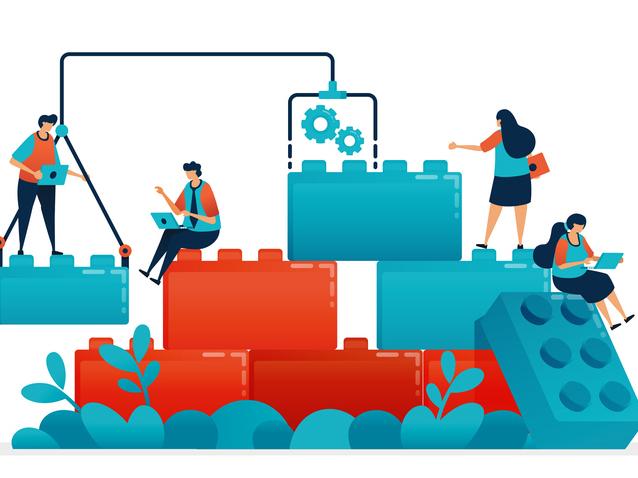A radical change in university education in Australia is significantly improving students’ pass rates. Our new research shows that changing how universities design and deliver learning experiences is resulting in better outcomes for students from under-represented backgrounds. This suggests the potential of this approach for improving academic outcomes for those students most at disadvantage in higher education globally.
This article explores how one Australian regional public university with a high proportion of under-represented students revolutionised its delivery model and created the conditions for more of its students to succeed in their studies.
Changing demographics require different teaching approaches
Global participation in higher education doubled from 19 per cent in 2000 to 40 per cent in 2020, according to figures from the Unesco Institute for Statistics. Many countries now have initiatives to allow a wider variety of people to study. As a result, more students from a diverse range of backgrounds are studying at universities in countries such as Australia and the UK and elsewhere in Europe.
- Collection: What is block teaching?
- Weaving gold from EDI straw: an intersectional approach
- Making higher education accessible for students with unmet financial need
In the past, people from low socio-economic areas, registered with a disability, from regional areas, the first-in-family to study or identifying as Indigenous (in countries such as Canada, New Zealand and Australia) were less likely to study than their peers. These students are sometimes referred to as equity or under-represented students, although these groupings are not without their critics. While this diversity in universities is positive, under-represented students often experience very different outcomes.
Radical change to block model at an Australian university
Our study examined a recent large-scale curriculum reform at Southern Cross University, a regional public Australian university. As many as 60 per cent of our students identify as first-in-family to study, 42 per cent live in regional or remote areas, and 5 per cent identify as Aboriginal or Torres Strait Islanders.
In 2021, we introduced a curriculum known as the Southern Cross model (SCM). The SCM uses “immersive scheduling”, or a “block” model. Block models engage students in shorter, more focused periods of study, mostly one subject at a time over four weeks. The SCM allows students to focus on up to two units over six-week terms. Active learning, which requires students to engage with the content, is delivered through online modules and twice-weekly scheduled classes. We have done away with lectures and, for the most part, exams. We have tried to make the learning more authentic. Students come to class and are required to participate in discussion, solve problems and work on cases – not sit and listen to lecturers.
Outcomes
We compared students’ results in our courses before the pandemic in 2019 using the traditional university approach with students’ results under the new model. Our analysis shows statistically significant increases in pass rates for under-represented groups, particularly Indigenous (10 per cent increase), registered with a disability (7.9 per cent), from low socio-economic areas (7.6 per cent), from regional/remote areas (5 per cent) and first-in-family (3.7 per cent). The immersive block model positively influenced academic achievement. International students, typically using English as an additional language, also showed increases (20 per cent).
Five reasons why immersive block models work better for university students
- Greater focus: students learn better when they study fewer subjects at once.
- Active learning: students learn better when they are engaged participants rather than passive observers.
- Flexible online learning: student learn better when they can access interactive, engaging content when they choose to, rather than travelling to campus for scheduled lectures.
- Fewer competing assessments: students perform better with fewer assessments at once.
- Better work-life balance: more focus and flexibility allows students to study when the time is right for them, fitted around work and family commitments, rather than when our timetables dictate.
These findings highlight the power of immersive block models to improve academic success for under-represented students. Holistic curriculum reform and focused, active learning pedagogy can be part of the solution to creating more inclusive universities.
So, how do universities go about transforming their institution?
As part of our recent research, we asked five staff who were academic and professional leaders at our institution what they would recommend considering when launching a whole-of-institution curriculum change process. We found the following five elements are essential to effective curriculum reform.
- Transparent leadership structures: leadership was required to systematically direct and communicate the change as well as plan for professional development for all academics. We established a new executive office to lead the planning, implementation and monitoring of the transition.
- Communities of practice: leadership is important, but leadership alone won’t shift the dial of practice across an academic community. Groups who meet across the institution regularly, working on changing business processes, the curriculum and policy, are absolutely necessary.
- Fit-for-purpose governance mechanisms: the shift to a block model requires a change to policy settings for everything from marking turnarounds to grade ratification, special consideration timelines (for make-up assessments) and appeal decision timelines. So many of the administrative processes that support students’ journey through higher education need to change.
- Appropriate levels of resourcing and planning: the aforementioned changes in policy and practice need resources. For example, our Centre for Teaching and Learning employed new teams of digital designers and educational designers, who led professional development sessions on best practice before and during the rollout.
- Robust monitoring processes: developing consistent reporting templates for tracking progress towards changing the curriculum, rolling out new policies and identifying risk to the provider’s executive are essential. Institutions need to agree goals and timelines (for example: “Rewrite 934 modules by 10 January” or “Increase student pass rates by 20 per cent”).
While these aren’t the only considerations for institutions planning radical curriculum transformations, we found that dealing with these matters before embarking on a change programme helped us achieve our goals.
Finally, our interviewees also pointed to the need to watch out for the uneven adoption of your block model’s precepts among academic staff. Rigorous quality assurance processes along the way can help here. Policy processes are important, but don’t forget that many of these require new technical solutions to ensure business processes work.
Thomas Roche is pro vice-chancellor for academic quality, Erica Wilson is pro vice-chancellor for academic innovation, and Liz Goode is a teaching scholar, all at Southern Cross University, Australia.
If you would like advice and insight from academics and university staff delivered direct to your inbox each week, sign up for the Campus newsletter.




comment